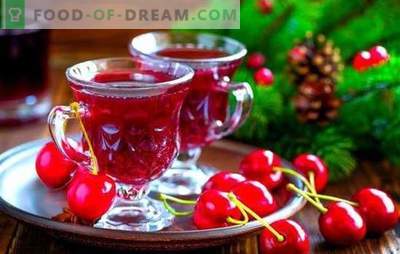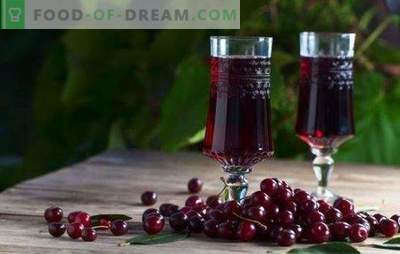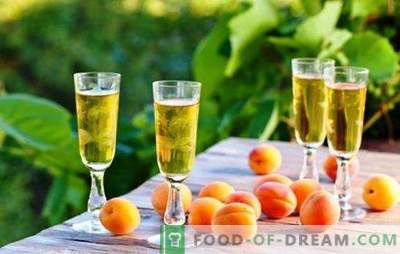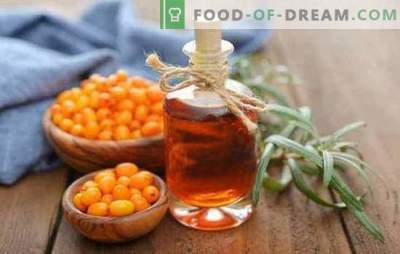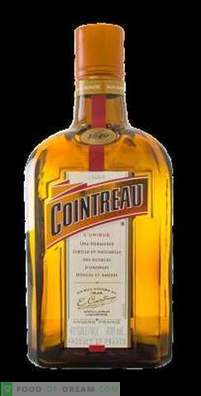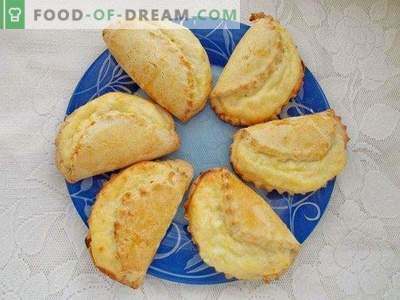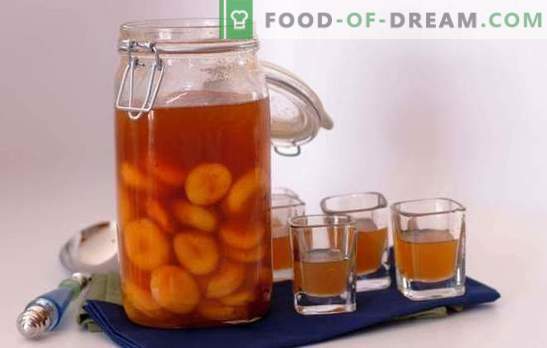
The popularity of the “Russian liqueur”, as it is now called the liqueur, did not compete until our autocrat cut a “window to Europe” and from there didn’t rush in search of work and a better life to the devastated “monsieur” to teach our “Mitrofanushek” European wisdom .
Together with overseas teachers, new alcoholic beverages appeared in Russia, among which was liqueur - the closest “relative” of liqueur. The difference between them consisted only in the fact that in liquors the main component was and remains not alcohol, as in liqueurs, but its fruit component. Alcohol came to us from the east, and our ancestors “sinned”, at most, fermented juices with honey, so they added vodka to the native Russian drink later, solely in order to extend the shelf life of drinks.
The variety of liqueurs in Russia is now approaching the variety of fruits and berries, not only growing with us, but also those with which, depending on the season, showcases and counters of stores, markets and supermarkets are filled. But first of all liqueurs are prepared from the most affordable, domestic fruit.
Apricot was once considered as an overseas fruit in Russia, and therefore liqueur from it was considered a luxury for the nobility, but until now there are people in our remote places who know the recipe of homemade apricot liqueur by heart from their great-grandmother, but have never heard anything about liqueurs , and is unlikely to be upset by this fact.
Let's talk about apricot liqueurs at home, general principles and the intricacies of its preparation. Domestic homegrown producers of “Russian liqueur” have something to be proud of.
Homemade apricot juice - the basic technological principles
Pouring - not only popular drink. Its production was established in Soviet times on an industrial basis, and very successfully. Of course, the technologists of distillery enterprises have developed formulations of liqueurs. But the home-made liqueurs made from apricots and other fruits are remarkable for the fact that the people in their home distilleries are not bound by technological conventions, economy modes and other industrial “zamorochki”. If we want, we can allow ourselves any degree, aroma, taste, and fruit intensity. Of all the conditions that are considered sacred and obligatory for execution at work, let us take up only the most necessary.
Filling - fruit extract, with an alcohol content of 18-20%, sugar - 28-40%. In industrial conditions, one of the ways to obtain it involves the use of alcoholized fruit juice, fruit drink, food coloring, flavor enhancers (essences), and other additives.
In homemade liqueurs mainly used natural raw materials. Juice or ground fruit, bypassing the process of fermentation insist on vodka, alcohol or other strong alcoholic beverages, with or without the addition of water. The resulting fruit extract is filtered, sweetened and kept until ready. Despite the fact that sugar dissolves in the liqueurs rather quickly, it takes some time to form a harmonious taste, since immediately after dissolving the sugar sharply dissociates in the drink.
Depending on the fruit raw materials used, late-ripening, mid-ripening and early ripening can be distinguished. The denser the pulp of the processed fruit, the longer the ripening process of the fruit liqueur. The quantitative composition of the ingredients for liqueurs does not have to be kept in the strictest form, unless you set a goal to prepare an already tried recipe, to accurately repeat its taste.
The technology of homemade apricot liqueurs is very simple and accessible to every housewife who wants to feast on a ladies drink during the dessert with her friends.
1. Recipe for homemade apricot liqueur on alcohol
Composition:
- Water 1.0 l
- Apricots, garden 1 kg
- Sugar 450 g
- Alcohol 93.6% 350 ml
Preparation:
Choose ripe apricots. For pouring, you can use slightly trampled berries, but without signs of spoilage. Wash and let the water drain. Remove the stones and chop well. The smaller the particles of the fruit, the better: small particles will quickly transfer the juice and all the substances contained in the apricots to alcohol. Place the prepared raw material in a can with a capacity of 3 liters. Fill the berries with alcohol. And mix well. Alcohol should cover apricots for 2-3 cm. If this does not work out, then add 0.5 liters of water. We use water for all liqueurs only specially prepared (distilled, thawed, spring). Water should be soft, without impurities. We hold the extract for 15 days and do not forget it regularly, at least in the morning and in the evening shake well. Extraction will be more successful at higher temperatures.
If you meet the advice that the extract does not need to be covered tightly, with a lid, but don’t believe it to tie a neck with gauze. Of course, it is possible to protect the extract from dust and insects in this way, but all the alcohol and the aroma of the berries evaporate with it even before the berries have time to be extracted. Close only tightly.
Pass the resulting tincture through a tight filter. Fill in the rest of the thick with the second part of the water, warm up, then strain the water. After the second discharge, the grounds can be thrown away. Add sugar to the water and boil the syrup until thick. Cooled to 25-30 ° C syrup pour into the tincture, mix in a closed container and soak the finished homemade apricot juice in the heat for another week. Can be bottled and sealed. Alcohol is stored for a long time. When stored, its taste only improves.
2. Old recipe for homemade apricot juice "Zhardel"
Composition:
- Wild apricots 3 kg
- Honey, May 1 l
- Vodka, apricot 2.8 l
- Water 3.0 liters
Preparation:
Clean ripe apricots with a brush, wash and remove bones and all spoiled berries. Put the prepared fruit in a ceramic pot and pour spring to the top with spring water. Put in a hot oven (100-110 ° C), cover with a lid and simmer until the heat is gone (until the oven cools).
Heat the oven again. In the infusion, add the remaining water, combined with honey. Tomite infusion. In order not to boil vigorously heat the lid for 2-3 hours. Do not open the oven, and if necessary reduce the temperature, turn off the heat, cool, and reheat again.
In the Russian oven, such an infusion was prepared for 3 days and a pot of apricots and honey was put in the oven after the soup. So in old times the temperature for cooking in the oven was measured: after the bread, after the soup.
When the tank has cooled completely, pour its contents through the filter into an enamelled bucket. Top up the vodka, soak until clarification and, removing from the sediment, pour into bottles.
3. Pouring apricots at home with cores of bones
Composition:
- Garden Apricots 3.3 kg
- Sugar 1.2 kg
- Purified moonshine or vodka (40%) 2.5 l
Preparation:
Sorted ripe apricots wash, remove the bones. Crush the pulp and mix it with sugar. Crush 10% of the seeds, remove the kernels from them and, after grinding, add to the bottle with apricot pulp and sugar. Mix the mixture with high-quality vodka or moonshine, without odors.
Sustain 3-4 months. The tank should be shaken periodically to improve extraction. Filter and pour the finished liqueur into bottles. The crushed apricot kernels give the liqueur a resemblance to the famous “Amaretto”, and this drink is very useful for making fragrant pastries, for example, one of the tastiest Soviet-era cakes “Abrikotin”.
4. Homemade apricot and bird cherry juice
Composition:
- Bird-cherry (berries) 150 g
- Apricots 5 kg
- Sugar 1.5 kg
- Alcohol, wine (70%) 1.7 l
- Water 1.5 L
Preparing liqueurs:
Podberry apricots and black cherry berries are laid by spreading them in a thin layer on a wire rack. Soak berries in the open air, in hot weather, but not in the sun, but in the shade. To protect them from insects, cover with gauze. After chopping the fruit and put it in the bottle. Boil a thick syrup, pour it into the bottle with the berries and add alcohol when the syrup is still warm. Cover the container with a lid, shake. Keep the infusion at least three months in the heat. Then pass the composition through the filter and seal the finished bottling.
5. Pouring apricots at home with oranges
Composition:
- Orange juice 1 l
- Apricots (puree) 2 kg
- Sugar 900 g
- Vodka 2.2 L
- Vanilla 2-3 pod
Preparation Method:
Put the finished apricot puree with vanilla pods in the bottle and fill with vodka. Hold the tincture for 14 days. Place the bottle in the kitchen, closer to the heat. It must be shaken in the morning and evening, and if possible, more often. Strain the tincture after a specified time. Throw in thick orange juice and add sugar. Warm the sugar to dissolve, but do not boil. Also filter the syrup. Connect it with tincture. Soak in the bottle for up to two months. Repeat filtering if necessary. Pour into prepared container and seal. This kind of liqueur is interesting not only as a drink, but also indispensable for making delicious desserts, pastries.
6. Homemade apricot, raspberry, strawberry and gooseberry
Composition:
- Berries in any proportion 2 parts
- Sugar and water - 1 part
- Vodka 1.5 parts
Preparation Method:
The drink should be thick and rich, stretching consistency. Selected and chopped berries pour vodka. “Forget” about a jar for a month and a half. Then squeeze the berries and add the syrup, made from equal parts of water and sugar. Soak the drink in a closed container for another couple of months.
Pouring apricots at home - tips and tricks
- For the preparation of liqueurs from fruits with dense pulp, which are difficult to obtain juice, you can partially use industrial technology, where the fruits are first fermented to get a more intensive secretion of juice.
- To increase the volume of juice, the following method of preparation of liqueur is applied: after receiving natural juice, squeezed fruit pulp is poured with hot water, mixed and the diluted juice is poured through the filter again. On the basis of this juice, the second drain can be prepared syrup, which is then connected with the alcoholized juice. In addition to increasing the volume of the drink with this method of manufacture, the quality of the brandy is significantly improved.

